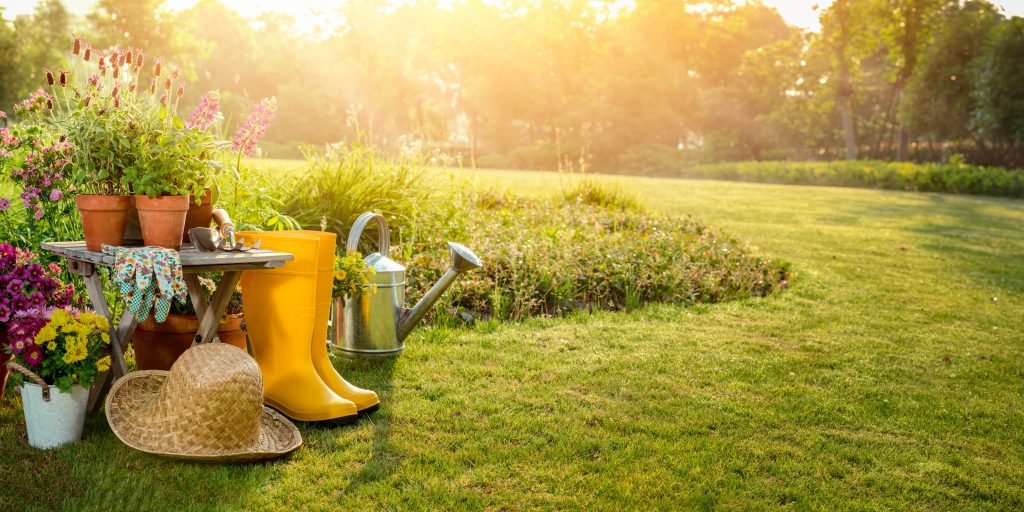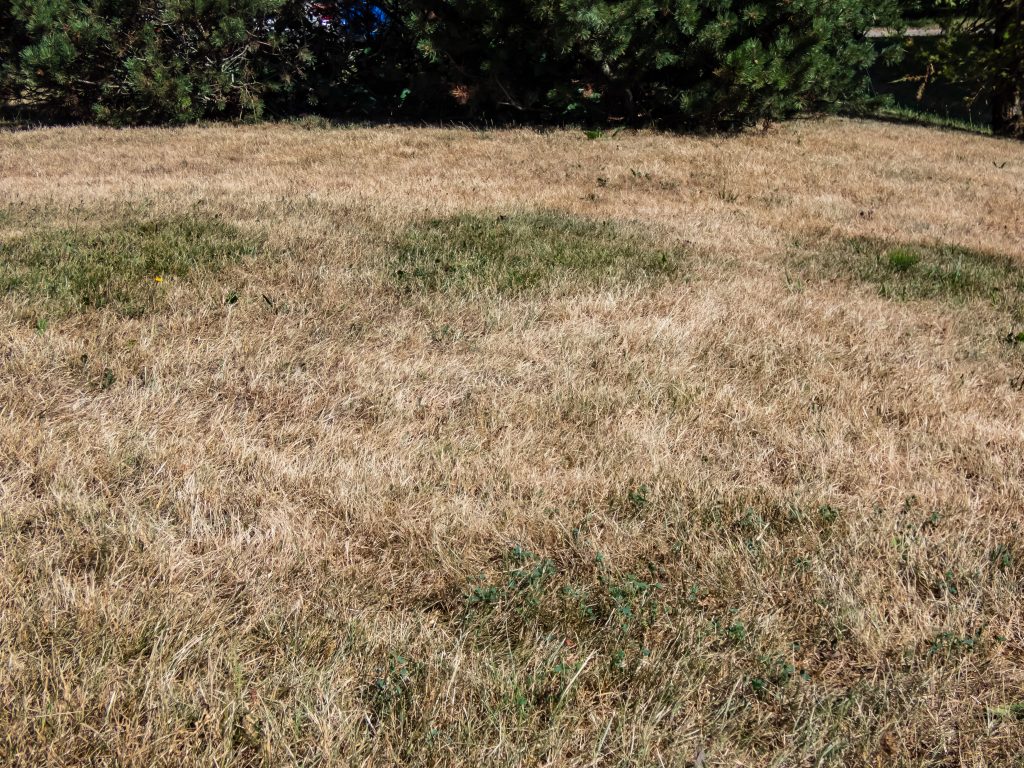To keep your lawn healthy, it is important to keep it well maintained and well fed! Keeping your lawn well fed will make it strong and more resilient to disease, pests, weeds, drought and other stresses, resulting in a lovely lush lawn to be proud of!
Knowing what type of fertiliser to use and when to use it can be quite confusing, so follow our tips below on fertilising your lawn so you can keep it healthy, strong and green.
Spring
As the winter frost gives way to the gentle touch of spring, your lawn stirs from its restful state, eager for a fresh start. It’s the perfect time to provide a nourishing boost that encourages root growth and sets the stage for a vibrant year ahead.
Reach for a spring feed, a tailored blend of essential nutrients designed to invigorate your lawn such as Westland Liquid Lawn Feed or Westland Top Soil. Alternatively, a combined spring weed and feed product (also Westland Liquid Lawn Feed) can tackle pesky invaders while providing vital nourishment.
Apply this treatment when your lawn is scheduled for its first mow of the year. This ensures that your lawn receives the necessary boost for healthy growth and vitality, setting a solid foundation for the season ahead.
Shielding Your Lawn from the Heat
Summer, a season that can test even the hardiest turf.
To fortify your lawn against the stresses of heat and drought, summer fertilisation is a must. By providing your grass with a liquid lawn feed, you improve its resilience helping it to thrive under the blazing sun.
Monitor your lawn’s condition and apply the summer feed as needed throughout the hotter months, offering a mixture of nutrients that keeps your turf lush and evergreen.

Preparing for Winter Months
As the leaves turn golden, your lawn continues to flourish. After enduring the trials of summer, it deserves a well-deserved treat—a late-season feeding.
By fertilising your lawn in autumn, you ensure it remains healthy, robust, and ready to withstand the challenges of the approaching winter.
A nourishing autumn feed will provide the necessary nutrients for your grass to establish resilience during the quieter months. You may want to use Westland Peat Free Compost for a slower release of nutrients during these slower times.
Towards the end of autumn, just before winter begins to cast its frosts, apply a winter liquid feed. This final nutrient boost prepares your lawn to face the cold season and primes it for a triumphant revival in the forthcoming spring.

Embracing Nature's Dormant Period
Winter arrives, and your lawn enters a period of hushed dormancy. The growing rate slows, and your grass finds solace in its slumber.
During this season, resist the urge to fertilise.
The natural rhythm of your lawn dictates a rest, and fertilising during this time would coax growth when it is unnecessary and potentially harmful.
Instead, let your turf revel in the nourishment it received throughout the year, allowing it to recharge and gather strength for the awakening that awaits with the arrival of spring.
By adhering to these seasonal fertilisation practices, your lawn will flourish in harmony with nature’s cycle, offering a vibrant canvas for you to admire throughout the year.
Decoding Nutrient Deficiencies
When it comes to nurturing your lawn, recognising nutrient deficiencies is crucial for providing the care it truly needs. Starting with a strong base with TopTurf’s Lawn Turf can set you up for success.
Here’s a simplified breakdown of common deficiencies and their telltale signs:
Nitrogen Deficiency: A Lacklustre Yellow Display
If your lawn lacks nitrogen, it will begin to show its displeasure through yellowing older leaves. As time passes, this yellowing spreads, leaving your once-vibrant grass looking lacklustre and in need of a nitrogen boost, possibly from products like Westland Lawn Sand.
Phosphorus Deficiency: Darkening Leaves with a Purple Twist
When phosphorus is scarce, your lawn’s older leaves will take on a darker shade of green, accompanied by a touch of purple. This visual transformation serves as a clear indicator that your grass is yearning for phosphorus to regain its healthy glow.
Potassium Deficiency: Withered Tips and Burnt Edges
A potassium deficiency manifests in your lawn as withered leaf tips, which turn brown and brittle. Meanwhile, the edges of the leaves appear scorched, resembling the aftermath of a fiery encounter. Products like Westland Multi-Purpose Compost or our Topsoil Bulk Bags can improve your soil health and provide the necessary calcium.

Calcium Deficiency: Young Leaves with a Touch of Rust
Although rare, calcium deficiencies leave a noticeable mark on your lawn. Keep a keen eye on the youngest leaves, as they may develop reddish-brown edges. Remedying with products like Westland Top Soil or Westland Landscape Bark can improve your soil health and provide the necessary calcium.
Magnesium Deficiency: Ageing Leaves Embrace a Red Glow
Magnesium deficiencies primarily affect older leaves. If your grass lacks magnesium, those leaves will flaunt a captivating cherry-red tinge, serving as a visual cry for help. Addressing this deficiency will revitalise your lawn and allow it to flourish once again.
By staying attuned to these signs, you can accurately identify your lawn’s nutrient requirements and select the perfect fertiliser such as Westland SafeLawn Liquid Lawn Feed to remedy any deficiencies. Remember, a well-nourished lawn will reward you with a lush, picture-perfect landscape throughout the year.
Emily - Graphic Designer & Copywriter
Emily - skilled graphic designer, copywriter, and content creator. She has a talent for creating stunning visuals and crafting compelling messaging that resonates with her audience.
